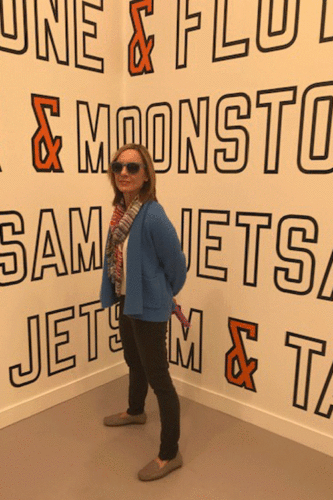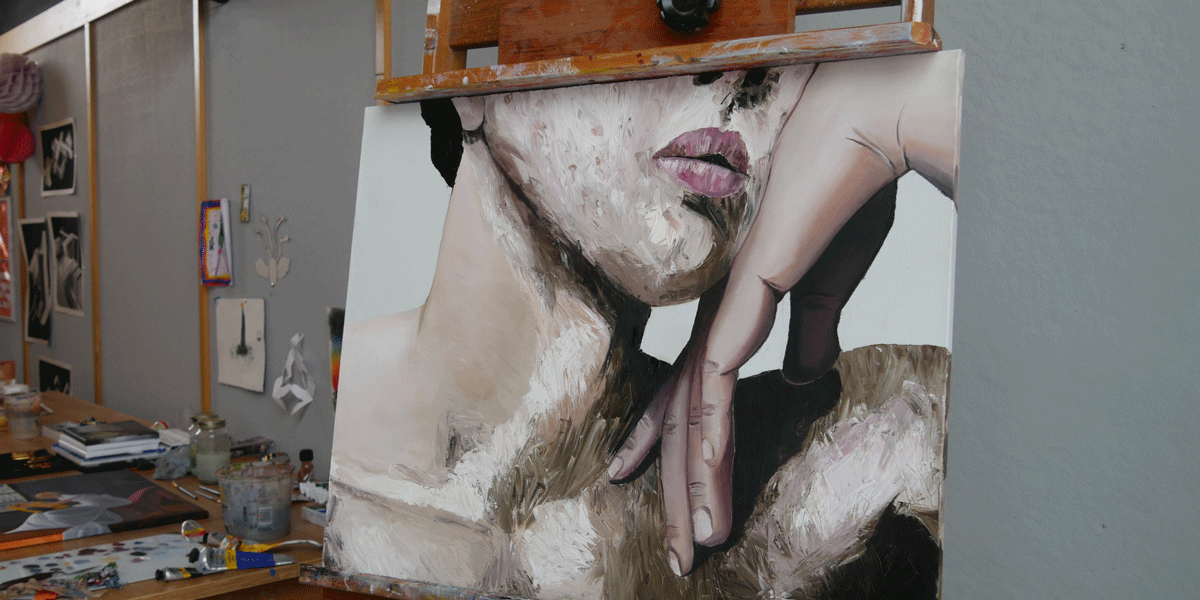
I told my colleagues recently that conceptual artist Lawrence Weiner is my present “art throb.” Picasso had his Blue Period. I, of late, have been obsessed with this concept of art as language and what that means across the spectrum. Although he is considered one of the key founders of post-minimalist conceptual art in the ‘60s, Weiner sees himself as a sculptor, with language as his medium for construction. Most important, whether his works exist in the recipient’s head or in some tangible physical form, he always considers the giver and receiver as well as the significance of dialogue. He writes, “Art is a conversation. And if there’s no conversation, what the hell is it about?” These are true words. Every place I go where art is present, I begin to think about the conversation, and even in places where art may not be suspected, the possibility of dialogue exists.
The art of dialogue is a building process. It is a construction of language that is inclusive, without barriers, as long as participants are curious and accessible. Certainly we recognize it in its obvious forms—a great scene between actors in Colorado Academy’s recent production of Black Comedy, instrumental students playing a piano duet, like-themed paintings of a Portfolio student, and the relationship between “the dancer and the dance,” to borrow from a poem by W.B. Yeats. If we look at a specific genre, like jazz, as CA Upper School History teacher, Aaron Thomas, explained to the Sophomore class last month in a jazz lecture/demo in which he played percussion, the very nature of improvisation relies on the conversation between musicians, and that dialogue is constantly in flux.
If you have not yet been there, I highly recommend a visit to the Kirkland Museum of Fine and Decorative Art in Denver’s creative triangle. The conversation is like one at magnificent dinner party. Six galleries surround a promenade where the three collections—European, Colorado Art, and advanced Kirkland works—are mixed in presentation. You move through the collection chronologically. It is gorgeous, and you can choose groupings with which to linger—furniture, glassware, paintings, dinnerware, and other articles of inquisitive interest. The conversation is not only between you and the art, but also among the artworks themselves, how they are placed, and how they relate to one another in this salon-style visitation.
How our students communicate through art
Closer to home, I asked a few of our students at Colorado Academy about how they interpreted this idea of dialogue inherent in their art. Molly Karst, a Sophomore, spoke to me of trying to explore the answers to questions she has in her writing. She defines the conversation as being that of an “engagement” with inspirations, where she says she is “teasing out answers through contemplation placed on the page.” Her idea of creating is very active, as she sees herself “tossing an idea back and forth and expanding” until she is able to reach an understanding.
Makayla Sileo says that in her Senior year she has transitioned from painting and drawing for others to painting and drawing for herself. She explains that she finds an “anchor” in the practice of art, and she seeks an illustrative dialogue that reveals intricacies and imperfections of humanity, which may not be pretty. Reflecting on how her work has evolved, she says it is clear that the conversations around art go beyond viewer and art or viewer and viewer. They happen between artist and artist. “Art isn’t just what hangs on the wall. It is how we reconcile ourselves with our realities, and the conversations that art elicits are often internal,” she writes. With her keen insight, Makayla places the internal dialogue at the very core of why art is necessary with the hope that it may be a means of “reversing polarization and bridging gaps between self and society.”
Likewise, Senior Sachin Mehta, a cellist who recently performed in concert with the CA’s Conservatory of Dance, claims the conversation must extend beyond the performers. He sees compositions as a musician’s attempt to capture a moment or an emotion into a piece, but that the musician cannot simply play or recite what the composer has written as that becomes “monotonic sound.” “Thus,” he says, “the performers must in effect converse with the audience and the piece, creating a unique unity that translates into meaningful sound.”
If we are willing to take our mortal selves and dive into the depths of an artistic experience that we know nothing about, are timid to view, or guilelessly have decided we do not like in terms of genre or medium, we indeed may be asking ourselves, with some frustration, what the experience is all about. Maybe what we need to do is relax from searching for pedagogical edification or even artistic enlightenment, and start seeking out the simple conversations, the dialogue that lingers in all human transactions either by accident or design. Maybe this extends beyond the scope of formal art. Maybe the conversation of art exists across the narrow walls of an alley in RiNo, between two objects in a discarded photograph, on the tongues of old men in tweed speaking Gaelic down on Colfax, or in the magical sing-song patter of children’s voices on our Lower School playground when sun shines on snow, and then again between the sun and melting snow.
Lawrence Weiner feels a gut-born urgency to make art widely available. He tells us that growing up in the South Bronx, he did not have the experience of a middle-class perspective and that art was “something else.” He says, “Art was the notations on the wall or the messages left by other people.” Perhaps this is the point after all, that if we trust our senses and listen to the artistic conversations both within and without, there is aesthetic goodness to be discovered in all experiences and in all human beings.
